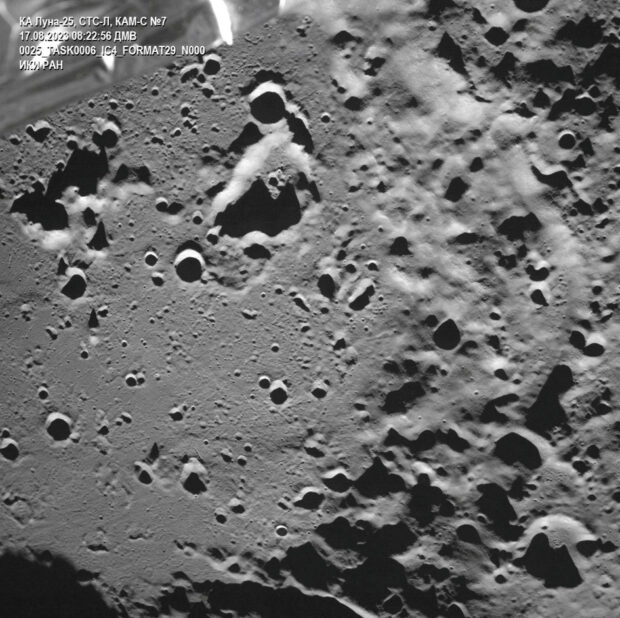Russia’s Luna-25 spacecraft suffers technical glitch, space agency says

A picture taken from the camera of the lunar landing spacecraft Luna-25 shows the Zeeman crater located on the far side of the moon, August 17, 2023. Roscosmos/Handout via REUTERS/File Photo
An “abnormal situation” occurred at Russia’s Luna-25 spacecraft on Saturday as it was preparing to transfer to its pre-landing orbit, Russia’s national space agency Roskosmos said.
The Russian spacecraft is scheduled to land on the south pole of the moon on Monday, part of a big power race to explore a part of the moon which scientists think may hold frozen water and precious elements.
“During the operation, an abnormal situation occurred on board the automatic station, which did not allow the maneuver to be performed with the specified parameters,” Roskosmos said in a short statement.
Specialists are analyzing the situation, it said, without providing further details.
Earlier, Roskosmos said it had received the first results from the Luna-25 mission and that they were being analyzed.
Article continues after this advertisementThe agency also posted images of the moon’s Zeeman crater taken from the spacecraft. The crater is the third deepest in the moon’s southern hemisphere, it said, measuring 190 km (118 miles) in diameter and eight km (five miles) in depth.
Article continues after this advertisementRoskosmos said data it had received so far had provided information about the chemical elements in the lunar soil and would also facilitate the operation of devices designed to study the near-surface of the moon.
It added that its equipment had registered “the event of a micrometeorite impact”.
The Luna-25 entered the moon’s orbit on Wednesday, the first Russian spacecraft to do so since 1976.
Roughly the size of a small car, it will aim to operate for a year on the south pole, where scientists at NASA and other space agencies in recent years have detected traces of frozen water in the craters.
The presence of water has implications for major space powers, potentially allowing longer human sojourns on the moon that would enable the mining of lunar resources.
RELATED STORIES